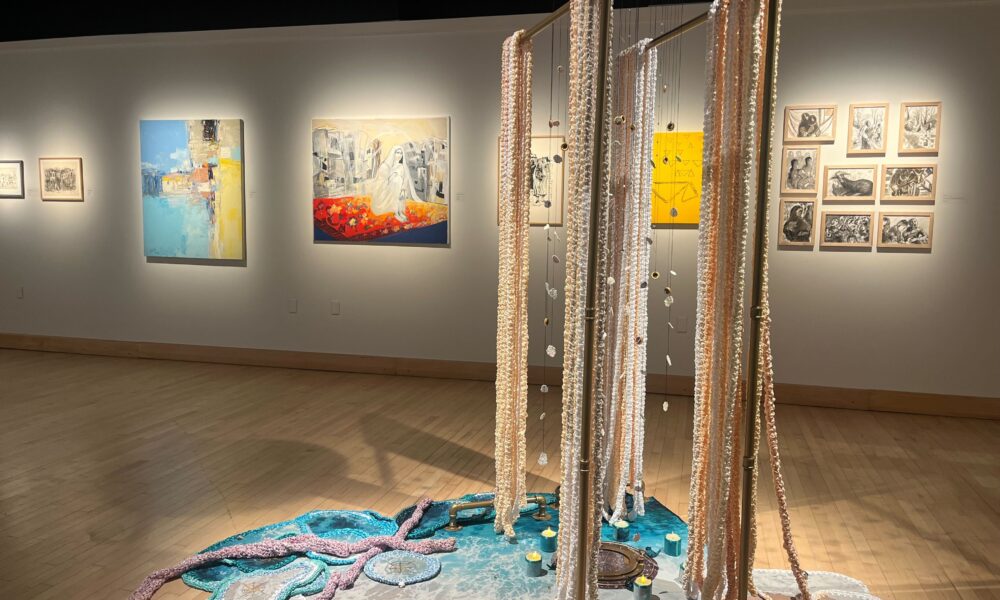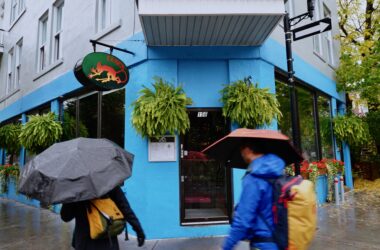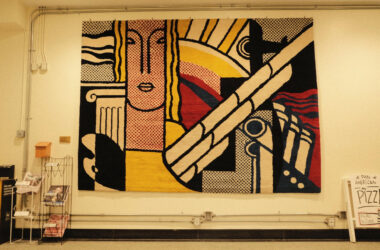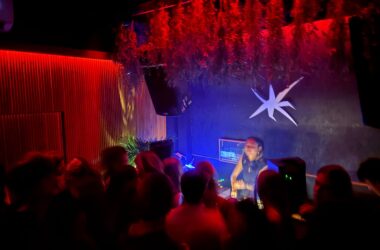The Montreal, arts interculturels’ (MAI) recent exhibition, The Lost Paintings, a Prelude to Return, brings together an expansive range of art to create a compelling and powerful showcase. Featuring works by 53 Palestinian artists, the exhibition showcased a diverse range of media, including photographs, sculptures, paintings, and multimedia pieces. The collection reimagines the works of the Palestinian-Lebanese artist Maroun Tomb, whose 1947 exhibition of 53 oil paintings in Haifa was lost during the Nakba. Curated by Rula Khoury, Joëlle Tomb, and Haidi Motola, The Lost Paintings attempts to reclaim this past by having each artist draw inspiration from Tomb’s painting using the few remaining records and archival documents.
The exhibition was deeply engaging, as the curators drew from pieces across time and settings, blending together the works of rising and established artists from across generations. While these pieces were stylistically varied, they all drew on central themes of loss, memory, and time through rich imagery and visual storytelling.
Weaving and embroidery were used across multiple pieces, such as Landmark, Nardeen Srouji’s sculpture of industrial metal sheets embroidered with brightly colored wool thread, and Farid Abu Shakra’s Embroidered Landscape, which consists of four copper prints embroidered with colourful thread and punctured holes to create patterns and images of birds. These works reference traditional forms of embroidery in Palestine by engaging with the practice itself and using these familiar patterns and motifs.
More contemporary pieces balanced artistic tradition throughout the exhibition. The collection featured large-scale installations made with unconventional materials, such as Mary Tuma’s The Road to Stella Maris. Tuma’s piece is a metal framework from which orange and cream crocheted ropes hang down over a blue print of the ocean waves, incorporating other materials such as candles and compasses. This collection of materials and forms made for a dynamic exhibition.
While landscapes are a form that can often easily be overlooked, many pieces in The Lost Paintings make the land the central figure of their designs, creating a sense of both instilled beauty and loss. Antoine Elias Raffoul’s black-and-white ink drawing, Back to 55: An Imaginary Mediterranean Landscape, uses artistic techniques he learned in 1955 from Maroun Tomb. Sandra Tomb’s oil painting of lush green forest, Under the Oak Trees with a Basket of Watermelons, brings a sense of hopefulness to an exhibition that is sombre and heavy. The work’s warm, earthy palette and thick, heavy brush strokes give the landscape a glowing effect. These landscapes vary in stylistic qualities and materials, yet all display a clear care and concern for the land.
One of the most striking pieces in the exhibition was Faissal El-Malak’s multimedia art piece, Hadar Hacarmel: I never thought I would ever find you, yet here you all are. It combines personal testimony, newspaper articles, and visual media to tell a greater story. The mix of media forces the viewer to ponder the work longer and engage with the emotional stories of displacement and loss. These raw and powerful testimonies bring a personal dimension to the overwhelming tragedies represented across the exhibition. The heavy use of writing also contrasts with many of the other visually based works in the gallery. The image of the cursor hovering over the buildings in El-Malak’s work gestures to a sense of forced distance from these landscapes and the role of technology in the contemporary age, bridging the gap between past histories and contemporaneity.
This collaboration weaves together different stories and histories in a powerful way, attempting to reanimate the nearly lost legacy of Maroun Tomb. Viewers are reminded of the importance of art in documenting the experiences of individuals and the sorrow attached to the loss of Tomb’s works. Each piece provides a significant contribution to the exhibition as a whole and highlights the power of storytelling through art.
The Lost Paintings, a Prelude to Return is open until October 4th.









